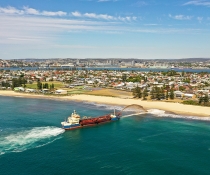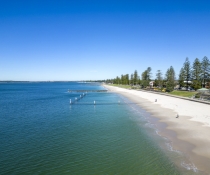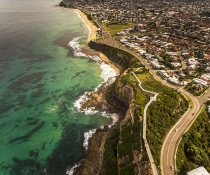Beachwatch expanding to inland waterways
The NSW Government's recreational water quality monitoring program Beachwatch is set to expand from the coast to include inland waterways across New South Wales.
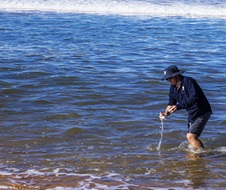
Water quality insights
Beachwatch was originally set up in 1989 in response to community concern about sewerage washing up on Sydney's beaches. During that time, the program gradually expanded along the state's coast and cemented a reputation as a trusted source of information.
Dr Meredith Campey, who manages the Beachwatch water quality monitoring program, said that in recent years demand for the service has grown, peaking with the floods earlier this year as people sought information about whether it was safe to return to the water.
"The expansion is to meet the increasing community demand for information on safe local swim sites. This was really highlighted during the recent pandemic and the lockdowns where people were looking for activities close to where they live."
"It's also about delivering the benefits of a program, equally and equitably, so we are moving from the coastal-based Beachwatch program to include inland waterways and river systems."
Working with councils
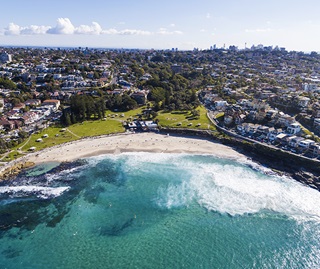 Beachwatch will be expanding the program to cover all of New South Wales. Any NSW local council can now opt-in to take part in the program.
Beachwatch will be expanding the program to cover all of New South Wales. Any NSW local council can now opt-in to take part in the program.
Operating as a partnership, the NSW Government's Beachwatch program provides the support, standards and technical guidance for recreational water quality monitoring. Participating councils collect and analyse water samples in accordance with Beachwatch protocols. Beachwatch monitoring ensures that guidelines are followed, so councils can feel confident that sites are safe for swimming and human health risks are assessed.
"Our focus is on program design, statewide coordination, centralised data management and analysis, as well as quality assurance, training and reporting to ensure that the partners can easily participate in the program," said Dr Campey. The expansion will also require the program to drastically scale up its capacity to incorporate the increased number of sites.
Diverse challenges
 Rainfall is one of the biggest drivers of poor water quality, generating stormwater and triggering discharges from the wastewater system. But Dr Campey said that the new sites would also bring new water quality challenges.
Rainfall is one of the biggest drivers of poor water quality, generating stormwater and triggering discharges from the wastewater system. But Dr Campey said that the new sites would also bring new water quality challenges.
"Each site has its own particular characteristics which determine the suitability for swimming. We assess potential risks including pollution, physical hazards and safe access," she said.
"When looking for signs of pollution, we are testing water for microbes as an indicator of faecal contamination. Swimming in polluted waters can expose swimmers to a number of dangers such as untreated sewage that carries the viruses or bacteria that can lead to illness such as gastroenteritis, or eye, ear and skin infections."
To be included in the expanded Beachwatch program, sites will have to undergo a human health risk assessment to ensure they are safe for swimming. It assesses factors like currents, chemical contaminants, algal blooms, safe access, and microbial risk.
As the program expands, the Beachwatch team will engage with both councils and the community to raise awareness about the expanded service delivery.



